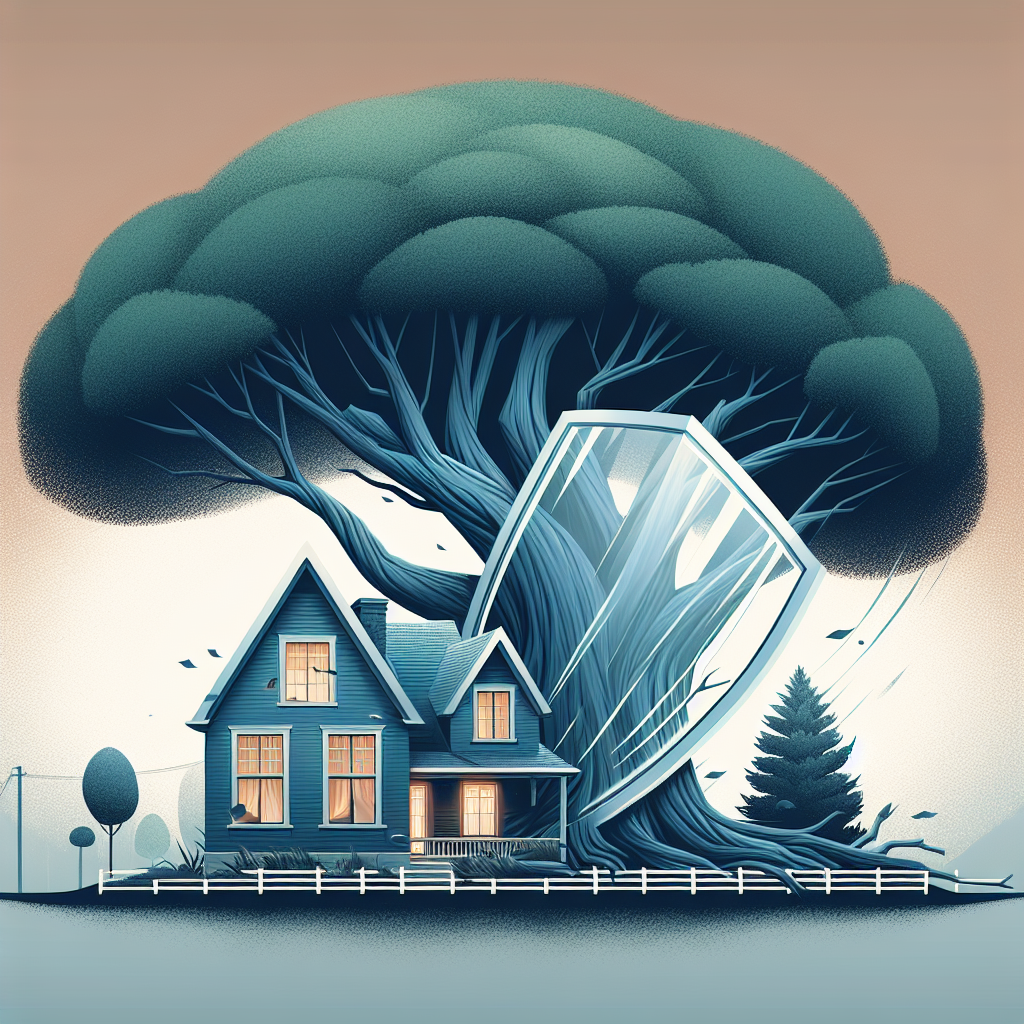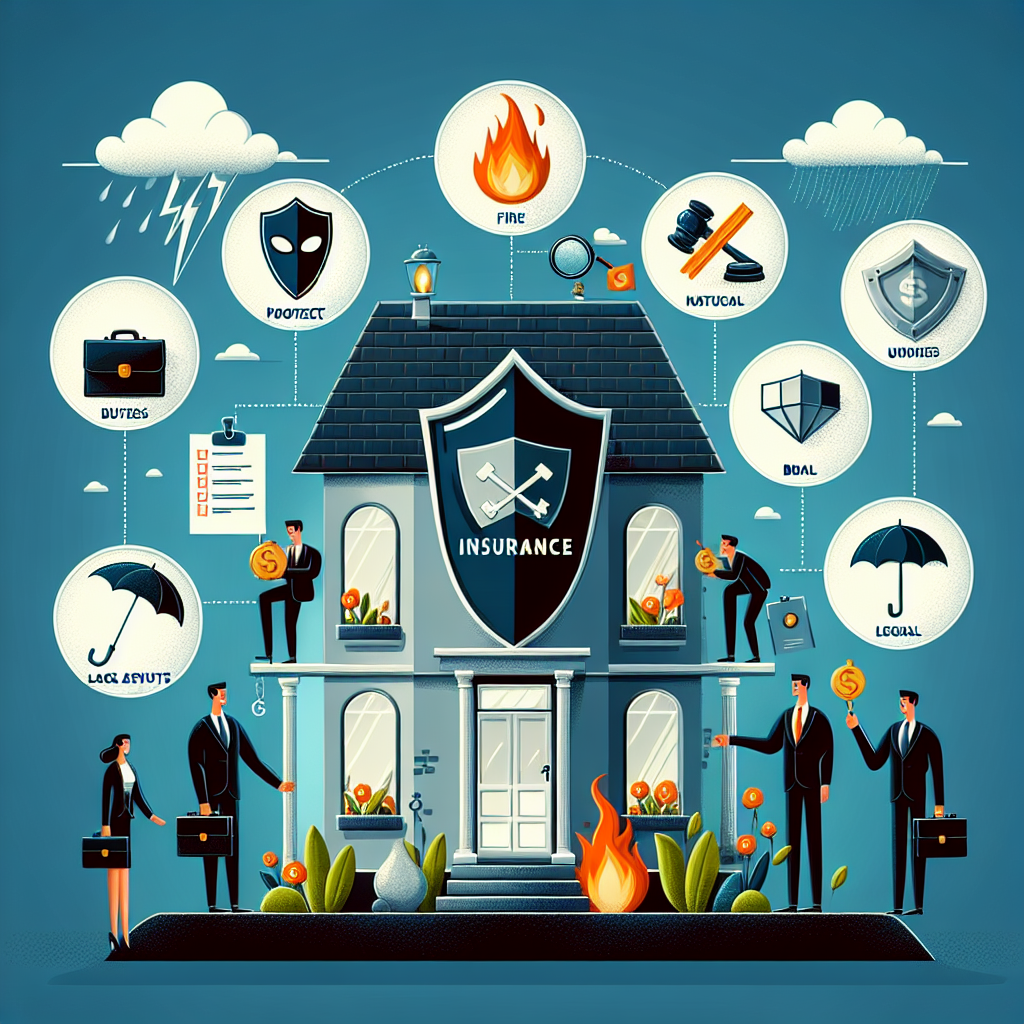Filed under Home Insurance on
Home Insurance: Protection from Falling Tree Damage

Homeowners often find solace in the shelter their homes provide, but the great outdoors can sometimes pose unexpected threats. Branches swaying in the breeze might offer aesthetic charm, yet when a tree falls, it can lead to extensive damage. This raises a pertinent question: how does home insurance protect from falling tree damage?
Understanding Home Insurance Coverage
Home insurance is designed to shield you from financial burdens arising from unforeseen events. It encompasses various types of coverage, such as dwelling protection, personal property coverage, and liability insurance. In the context of falling tree damage, it’s essential to understand which aspects of your policy come into play.
Dwelling Coverage: The Foundation of Protection
When a tree topples over onto your house, it can cause significant structural damage. Dwelling coverage within your home insurance is what steps in to cover the cost of repairs or rebuilding. This includes damage to the roof, walls, and other integral structures.
Personal Property Coverage: Safeguarding Your Belongings
If a falling tree damages the contents within your home, personal property coverage helps pay for the replacement or repair of those items. This coverage ensures that your valuables are protected, from electronics to furniture.
Liability Insurance: When Property Damage Extends to Neighbors
In scenarios where a tree on your property damages a neighbor's home, liability insurance comes into play. It covers the costs associated with the damage your property causes to others, serving as an additional financial safeguard.
When Does Home Insurance Cover Falling Tree Damage?
Coverage for falling tree damage under home insurance typically depends on the circumstances under which the tree fell. Insurance companies often evaluate factors such as weather conditions and the health of the tree prior to the incident.
Weather-Related Incidents
Most policies cover damage from falling trees if it's due to a storm, heavy winds, or other natural occurrences. It’s crucial to document the event with photos and weather reports, which can substantiate your claim.
Well-Maintained vs. Neglected Trees
Claims can be denied if the tree fell due to negligence or poor maintenance. Homeowners are generally expected to manage their trees’ health, addressing disease or decay proactively. Regular maintenance checks and professional assessments can prevent potential disputes in claims.
Steps to Take After a Tree Falls
In the aftermath of a fallen tree, taking swift and strategic action can mitigate further damage and streamline the claims process.
- Ensure Safety: Before anything else, ensure the safety of your household. Avoid entering damaged areas and watch out for any electrical hazards.
- Document the Damage: Use a camera or smartphone to capture images of the damage from various angles. Detailed documentation can strengthen your insurance claim.
- Contact Your Insurance Provider: Reach out to your insurer as soon as possible. Provide them with the documentation and a thorough account of the event.
- Prevent Further Damage: Make temporary repairs, like tarping a damaged roof, to prevent further issues. Keep receipts, as these costs may be reimbursed.
- Consult Professionals: Engage with arborists for tree assessments and contractors for structural repairs, ensuring they provide detailed reports.
Tips to Prevent Falling Tree Damage
Minimizing risk requires proactive measures to maintain tree health and mitigate potential hazards.
Regular Tree Inspections
Engage certified arborists to conduct regular inspections. They can identify diseases, decay, or structural weaknesses, recommending solutions to avert imminent risks.
Appropriate Pruning and Trimming
Pruning and trimming can prevent overgrowth, reduce wind resistance, and eliminate dead branches. Regular maintenance fosters stronger, healthier trees.
Choosing the Right Species
Consider planting trees that are less likely to fall, such as species with deep root systems and sturdy trunks. Consultation with landscaping experts can help in making informed choices.
Industry Trends and Innovations
The insurance industry is continually evolving, embracing technology to enhance risk assessment and claims processing.
Smart Technology Integration
Emerging solutions like drone inspections and AI-driven analytics offer innovative ways to appraise tree health and damage, facilitating more accurate claims evaluations.
Eco-Friendly Insurance Options
Some insurers now offer policies that promote sustainable practices, encouraging homeowners to plant resilient trees and maintain eco-conscious landscapes.
Expert Opinions on Tree-Related Claims
Industry professionals emphasize the importance of understanding your policy and being proactive in maintaining your property. Regular communication with your insurer ensures clarity on coverage specifics and obligations.
Through diligent maintenance and an understanding of your home insurance policy, you can ensure your home remains a secure refuge, even against the whims of falling trees. Armed with knowledge and preparedness, homeowners can confidently navigate the intricate dynamics of home insurance and falling tree damage.





